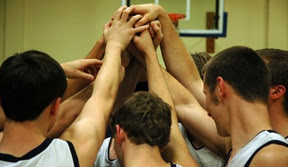Are your hiring managers looking for a Kappa Mu when they should be looking at KPIs? Are they finding a Sigma Chi when they should be figuring out ROI?
As it turns out, cultural similarity often trumps qualifications when it comes to evaluating potential candidates in job interviews.
According to a study conducted by Lauren Rivera, an assistant professor at Northwestern University in Evanston, Ill., employers at professional service firms appear to be more focused on finding a candidate who’s the right fit for the firm’s existing employee base in leisure pursuits, background and self-presentation rather than the person best able to do the job.
The study, titled “Hiring as Cultural Matching: the Case of Elite Professional Services Firms” and published in the December issue of the American Sociological Review, showed that more than 70 percent of the evaluators Rivera interviewed at law firms cited fit as the top criterion for assessing a job candidate. At investment banks, it was more than 60 percent and at consulting firms it was closer to 40 percent.
That’s not likely much of a surprise to anyone who has spent time around lawyers, consultants and top-flight bankers. But while cultural fit is important, especially at elite professional firms where candidates spend many nights and weekends together on the job, it comes with a potential downside.
“Some of the hiring process was screening out candidates who could potentially be high performing [and] bring different perspectives to the table but [who] were missing some of social class cues,” Rivera said.
An effective hiring practice should aim to create cohesion among employees and cultural similarity can be a good signal of that potential connection among prospective co-workers. But an ideal hiring process should also bring diversity to the table.
A diverse slate of candidates — both in surface-level aspects such as race and gender as well as deeper-level diversity in culture and styles of thinking — is associated with more creativity, better team decision making and more openness to alternative information and scenarios, Rivera said.
“There’s definitely a benefit in having people come from different places to your firm in terms of quality of decision making,” Rivera said. “It’s just harder to create cohesion when you have that.”
Interviews: ‘It’s Not You, It’s Me’
When individual interviewers don’t receive instruction on concrete metrics to gauge intelligence, sociability or motivation, they will fall back on themselves and their own experience as a decision-making guide.
“It’s a really easy tool: Is this person similar to me?” Rivera said.
In making that judgment of cultural similarity, activities outside of work are often what interviewers use as an assessment. In middle class and upper middle class backgrounds, extracurricular activities have become a central part of how people conceive of merit, Rivera said.
“To get admitted to an elite college you not only have to have high achievement in the classroom, you also have to have really outstanding extracurricular activities,” she said. “It’s kind of a taken-for-granted part of societal culture that influences the types of similarities people value.”
In many interviews, the first few minutes are taken up with the sort of chitchat that is filled with rich cultural information about the candidate and the interviewer, such as what they like to do outside of work, where they are from and where they went to school.
“Although those conversations are part of the script in interacting — it would be really awkward if we didn’t have one — those initial interactions can cause someone to check in or out of an interview based on stuff that’s not necessarily related to the job in question,” Rivera said.
When people have a similar narrative that draws in the interviewer and creates affinity, it creates a snowball effect that makes it difficult for interviewers to identify other job-related qualities. The result is an interview process that might not lead to the most skilled candidates.
“It’s unclear if firms are hiring the best talent now because they’re not measuring how people do down the line,” Rivera said. “That strategy could work, but firms also could be missing out on talented candidates who haven’t been groomed from age 14 to have the same cultural basis as the current employee base of the firm.”
What to Do About It
Interviewers can practice to avoid the downsides of cultural matching in interviews, but they also need information to determine if candidates’ subsequent performance matched the initial reviewer’s rating.
“If firms tracked in a systematic way the relationship between individual resume characteristics and/or interview scores and the scores of the people who are doing the evaluating, you’d have a much better sense of whether your hiring criteria work.”
That level of quantification is difficult, though, so Rivera suggested a few simple things organizations can do to avoid having cultural similarity trump a candidate’s potential to do the job:
- Implement blind standards so no extracurricular activities are included on resumes. “By taking that line out of the resume, you could at least get more people into the interview pool that might not conform to that path,” she said.
- Develop systematic interviews that focus on job-relevant tasks using tests or case studies to measure skills related to the job. Consulting firms offer a good model, Rivera said. They allow a short time for informal chitchat, but the bulk of an interview is built around a business case applicable to the job.?
- Shift icebreaking conversation away from an interview’s beginning. “The first things that happen in the interview have disproportionate weight,” she said. “Anchoring those first five minutes in things that are more directly relevant to the job would be a way to do it.”
- Employers also could give lesser weight to interviews as an evaluation tool, such as making it 20 percent versus 90 percent of the decision to hire. That weighting could vary based on the importance of interpersonal skills and collaboration to the job at hand.
While Rivera’s study focused on professional service firms, she believes the findings about the role of cultural matching in interviews are applicable to other industries.
“Organizations that want to think critically about how they can better get diversity in the door and make sure they are getting the people who are best qualified and most interested in doing the job might want to find ways so that the bulk of the decision is based on who is the best-qualified applicant,” she said.
Mike Prokopeak is the editorial director of Talent Management magazine. He can be reached at mikep@mediatecpub.com.















